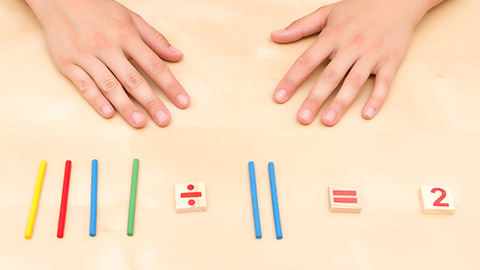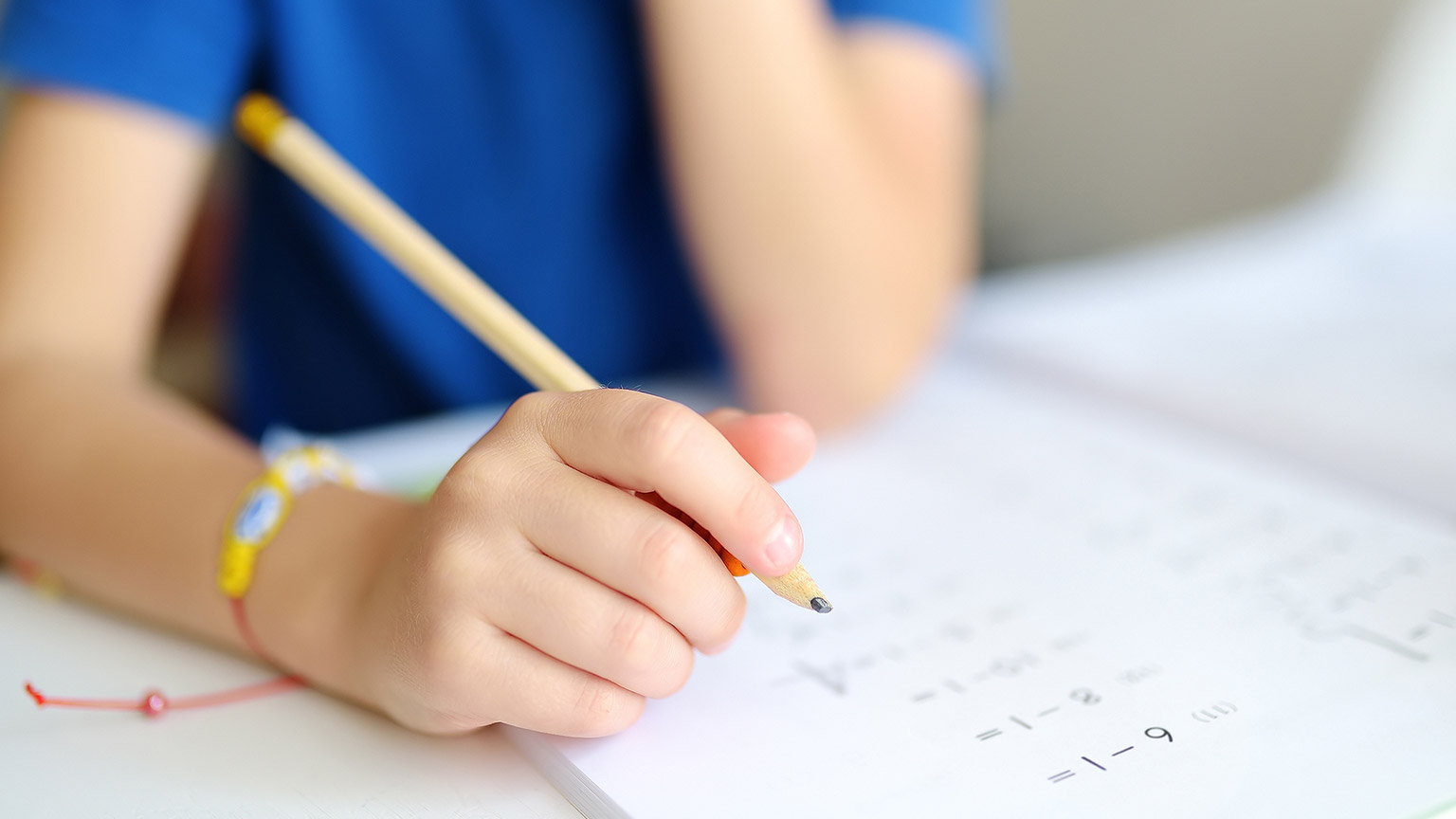Dyscalculia is a term used to describe specific learning disabilities that affect an individual’s ability to understand, learn, and perform math and number-based operations. They may lack an intuitive understanding of numbers and struggle with fundamental math concepts and procedures. Even when producing correct answers, they often approach mathematical tasks mechanically and without confidence. Memory and sequencing issues create further challenges, affecting everyday activities like following instructions, managing time, and handling finances.
Dyscalculia frequently co-occurs with other learning disabilities, such as dyspraxia and dyslexia, and is linked to distinct brain pathway differences. Recognising and intervening early are important in assisting individuals to acquire essential mathematical skills for success in academics and beyond.
It’s been described as the number one cause of math weakness that you’ve never heard of. Dyscalculia is a specific learning disability we know very little about yet it affects around 6 percent of the population.https://www.speld.org.nz/specific-learning-disability-definitions/dyscalculia
Watch the following videos (and do some research of your own) to learn about the main characteristics and indicators of dyscalculia.
Watch: Understanding Dyscalculia: Symptoms Explained (4:04 minutes)
The video looks at developmental dyscalculia, explaining how it affects children's understanding of quantities, spatial representations of numbers, and the crucial links between symbols and quantities, ultimately impacting their ability to grasp fundamental math concepts.
Pre-watch question
The video looks at developmental dyscalculia, explaining how it affects children's understanding of quantities, spatial representations of numbers, and the crucial links between symbols and quantities, ultimately impacting their ability to grasp fundamental math concepts.
Post-watch task
Note the primary characteristics or symptoms of developmental dyscalculia, as explained in the video.
Watch: What is Dyscalculia? (3:28 minutes)
This video discusses the diverse ways dyscalculia manifests, including challenges with numbers, spatial concepts, and language in math. It emphasises the importance of understanding and addressing these challenges to provide effective support and accommodations in educational settings.
Pre-watch question
Are there any misconceptions or stereotypes about dyscalculia that you're aware of? What are they?
Post-watch task
Note the primary characteristics or symptoms associated with dyscalculia in young children, as explained in the video.
Individuals with dyscalculia commonly exhibit signs such as struggling with grasping quantity meanings, confusion between numerals and words, difficulty in recalling math facts, challenges in handling money and time estimation, trouble with speed and distance assessments, logic comprehension in mathematics, and retaining numbers during problem-solving.
Common Signs of Dyscalculia
| Preschool | Primary School |
|---|---|
|
|
| Secondary School | Adults |
|
|
Complete the quiz without referring to the previous table. Choose the correct answer in these multichoice questions.
Dyscalculia Simulations
These simulation activities will provide you with an opportunity to gain a better understanding of what it's like to experience dyscalculia.
Pre-watch question
What do you consider might be some common challenges and difficulties experienced by individuals with dyscalculia in tasks related to numeracy, calculations, and memory?
Watch: Dyscalculia Simulation Activity 1 (1:01 minutes)
Watch: Dyscalculia Simulation Activity 2 (0:54 minutes)
Do: Spatial Activity: Making 3-D Inferences
Complete this quick activity from PBS:Spatial Activity: Making 3-D Inferences.
Post-watch task
How did the simulations affect your confidence and comfort when dealing with tasks related to numeracy, calculations, and memory?
Did the simulations provide you with a better understanding of the difficulties individuals with dyscalculia face in their daily lives? If so, explain how.
Assessing dyscalculia is a complex process due to the lack of a standardised method and lack of research. Evaluations should consider factors like intelligence, other learning difficulties, anxiety, stress, language differences, and inconsistent schooling. Dyscalculia's exact causes remain unclear, but genetic, environmental, and brain-related factors are believed to contribute.
Qualified professionals conduct comprehensive assessments using tests that cover computation skills, math fluency, mental computation, and quantitative reasoning.
- Computation skills tests assess efficient math operations, e.g., Woodcock-Johnson IV.
- Math fluency tests evaluate the ability to recall math facts quickly, e.g., WJ IV Math Fluency.
- Mental computation tests measure mental math abilities, e.g., Wechsler Intelligence Scale for Children.
- Quantitative reasoning tests assess problem-solving skills in mathematical contexts, e.g., WIAT-III Math Problem Solving.
Evaluations may occur at any age, using age-appropriate tests. They help pinpoint areas of struggle and guide interventions, aiding individuals with dyscalculia in improving their mathematical skills. Assessments also consider possible comorbid conditions, like attention issues, ensuring a comprehensive understanding of an individual's needs.

While there is no ‘cure’ for dyscalculia, there are effective techniques and accommodations to provide support. Dyscalculia involves intricate challenges, including struggles with the number system, memory, perception, and reasoning. The following task looks at accommodations designed to assist individuals with dyscalculia to excel in mathematics by addressing these complex challenges.
Five key accommodations commonly used for dyscalculia are:
- Use of Manipulatives
- Extended Time
- Alternative Assessments
- Multisensory Instruction
- Use of Technology
In the following activity, you will find out a bit more about each and propose some creative examples.
Learning Activity - Dyscalculia Accommodations Scavenger Hunt
Set off on a journey to research each of the accommodations mentioned above, finding out what each one means, its essential elements, and one or two practical examples. You will be able to save your work as a handy learning resource at the end of the activity.
Here are three websites to get you started. However, you are encouraged to explore additional resources of your choice to complete the activity.
- Understood: Classroom accommodations for dyscalculia.
- Dyscalculia.org: Accommodations.
- Number Dyslexia: 9 Helpful Accommodations For Students With Dyscalculia.
Ava's Story
Read the story of Ava – a young girl with dyscalculia and then complete the activity that follows. Her daily struggles with math often go unnoticed, but they significantly affect her life beyond the classroom.
Reading
A day in the life of a teen with dyscalculia
Read the article from Understood here: A day in the life of a teen with dyscalculia.
Post-read Task
How might the accommodations or strategies discussed earlier, be applied to specific parts of Ava's story to address her challenges related to dyscalculia in each of those situations?
Complete the following activity to capture the accommodations used throughout Ava's day.
Experts say it’s like colour blindness. Just like some people are born having trouble telling the difference between colours, some people are born having trouble telling the difference between quantities.The Understood Team - https://www.understood.org/articles/a-day-in-the-life-of-a-teenager-with-dyscalculia
- Dyscalculia is a specific learning disability affecting math and number-based operations, often co-occurring with dyspraxia and dyslexia.
- Characteristics include challenges with understanding numbers, fundamental math concepts, and memory and sequencing issues.
- The infographic illustrates common signs of dyscalculia across preschool, primary school, secondary school, and adulthood.
- Dyscalculia simulations provide insight into the challenges individuals face in numeracy, calculations, and memory tasks.
- Assessment for dyscalculia considers diverse factors and utilises tests covering computation skills, math fluency, mental computation, and quantitative reasoning to guide interventions and understand an individual's needs.
- Effective accommodations, including manipulatives, extended time, alternative assessments, multisensory instruction, and technology, are tailored to address challenges related to the number system, memory, and reasoning, providing support for individuals with dyscalculia.
